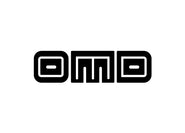The year is 2015, I (Corey) am turning 16 and looking for my first car. Having grown up around modified, extraordinarily fast cars, I knew I wanted something with the potential to modify in the future. After thinking for a while with some counsel from my dad, I settled on getting an early 80's Toyota Starlet. A lightweight, rear wheel drive, Japanese 80's drift icon that was perfectly suited to get an engine swap.
I drove the car to my junior year of high school with the factory engine and a whopping 58hp stock. The car was fantastic; it has so much character and "soul" to it and I immediately knew I had picked the right car for me. Shortly after the modifications began; starting with an upgraded Weber DCNF carburetor, then a Sparco bucket seat. At this time we had become friends with Martin and so I asked Martin to help me install new coil overs and wheels to the car.
By this time it had been decided that a Suzuki Hayabusa engine would be the perfect powerplant for the car. A Japanese, super lightweight, high revving 4 banger? What could be better for the Starlet. Early in my senior year we found the bike we were looking for, a clean 6000 mile 2008 Hayabusa. We took the engine, ECU and instrument cluster out of the bike and sold the rest.
Now began the journey of turning my first car into a full blown Busa powered race car. The first step in that journey was to build a FIA legal roll cage. We went ahead and stripped the car all the way down to the bones and built a DOM tubing FIA legal cage in the car. With the cage finished it was time to figure out the mounting of the engine. We knew we wanted to do a four point mounting setup to the frame rails, it was just a question of how to do so.
We quickly ran into some issues. The steering shaft was going to contact the engine, and the oil pan was right where the subframe was. To fix these issues we custom made a CNC aluminum oil pan that fit around the subframe, allowing us to place the engine properly and then move the steering shaft accordingly. With the engine in the correct place we could now make the CNC machined aluminum engine mounts.
With the engine mounted, Martin was able to build a one-off 321 stainless exhaust manifold for the car and Steve made the wiring and the shifter among a slew of one-off CNC parts. With these parts installed it was nearly time to start the car up.
Shortly thereafter we started the car for the first time. The motorcycle sound mixed with the yellow shitbox hatchback was a hilarious, entertaining, and downright wonderful combination. Since then, we have driven the car north of 3000 miles on the street and loved every moment of it.
However, all this driving was happening with OEM suspension and brakes in the car which not only vastly underperformed the engines capabilities, but were also the weak point of the car resulting in 3 broken driveshafts, brake leaks, and other issues.
At this point we wait for the time to spend on the car to build our custom suspension setup with bigger brakes and independent rear suspension. That time will come soon...
To Be Continued...
